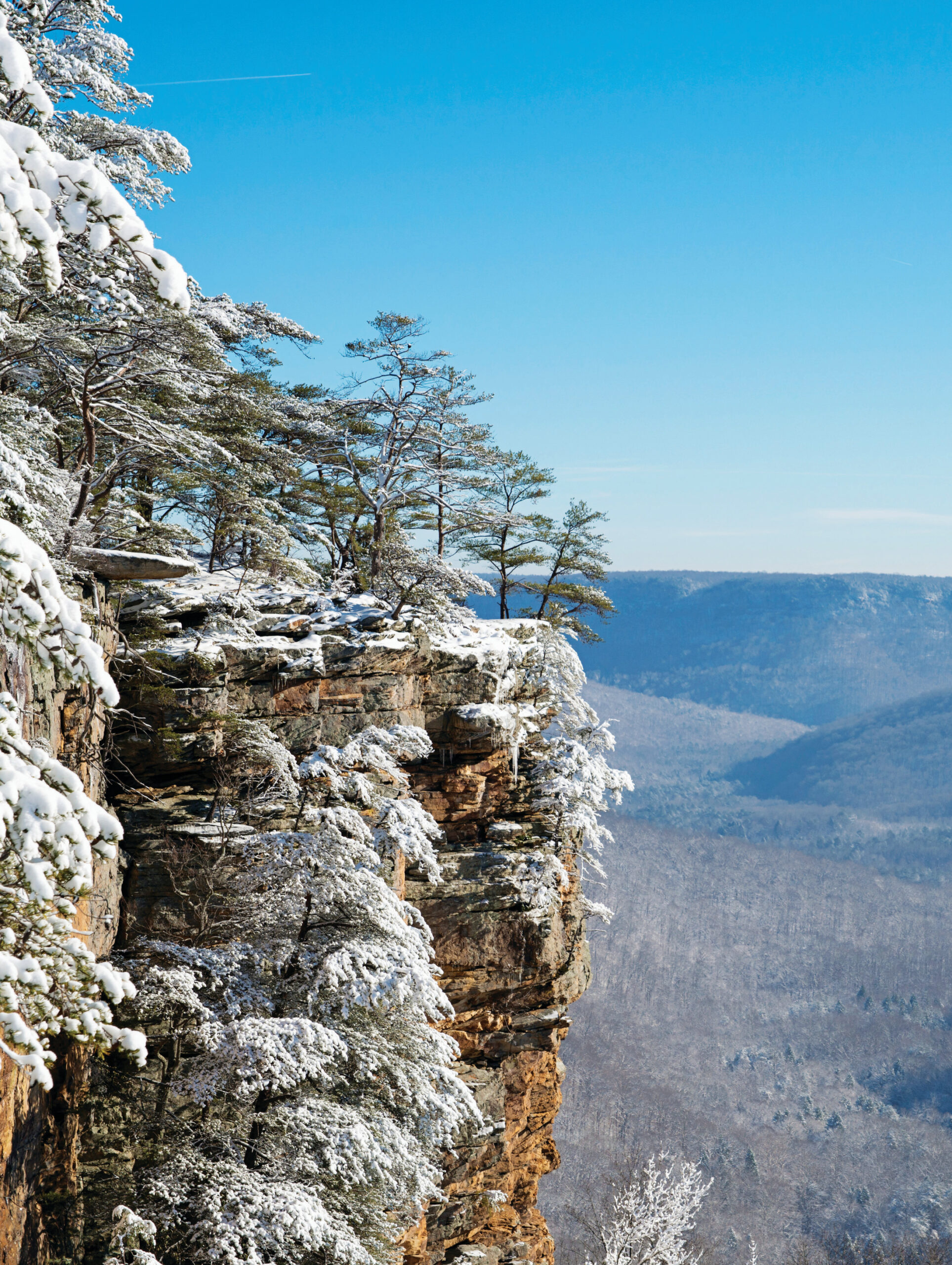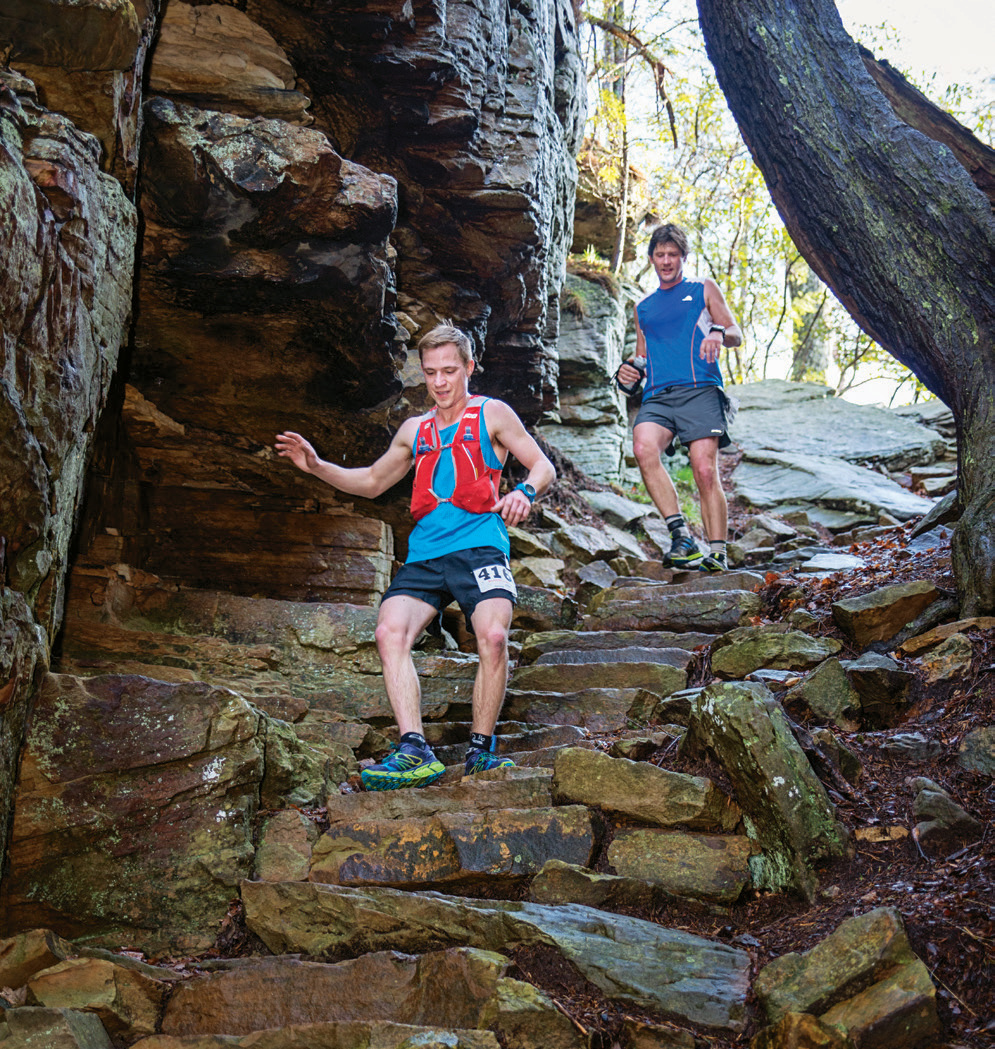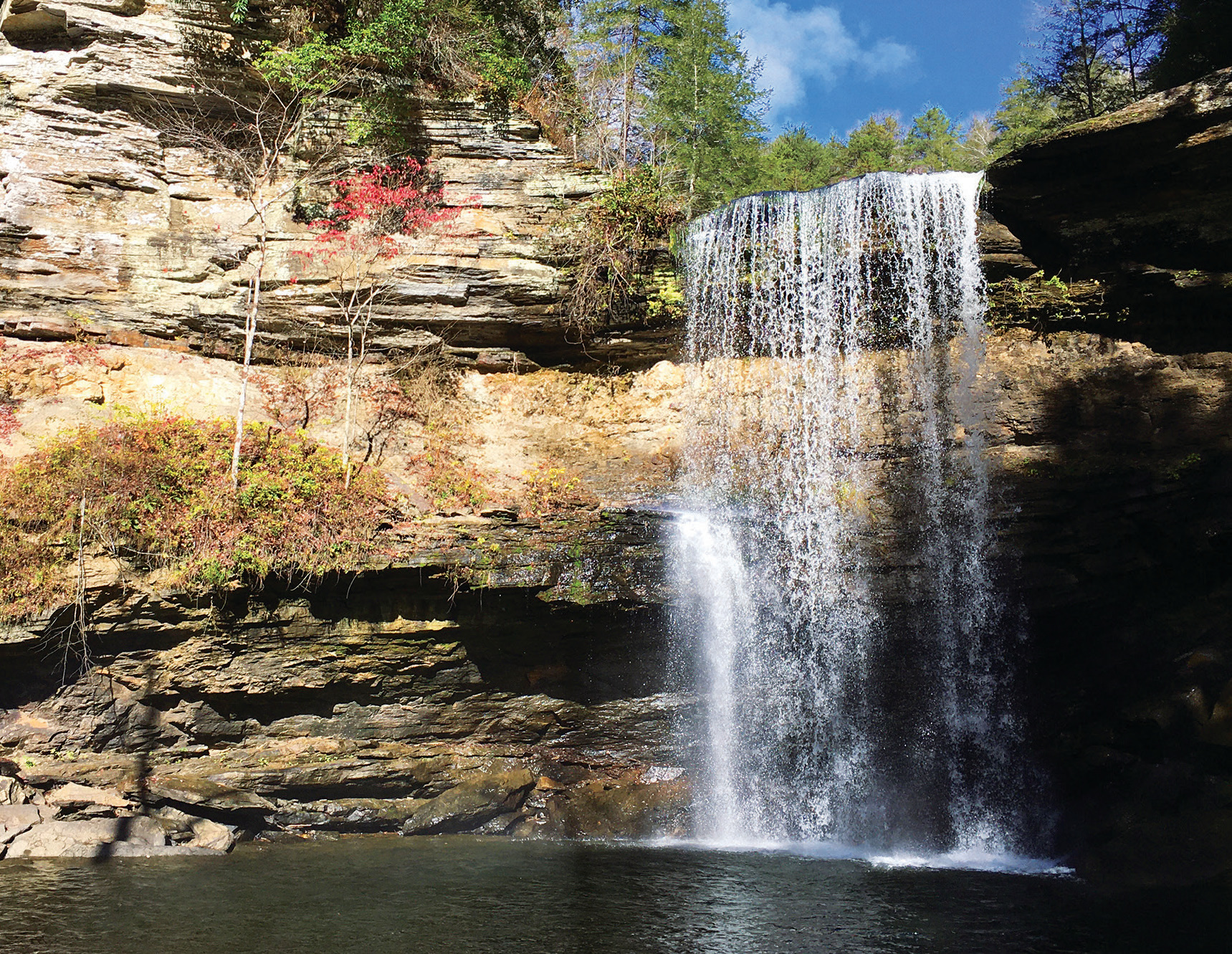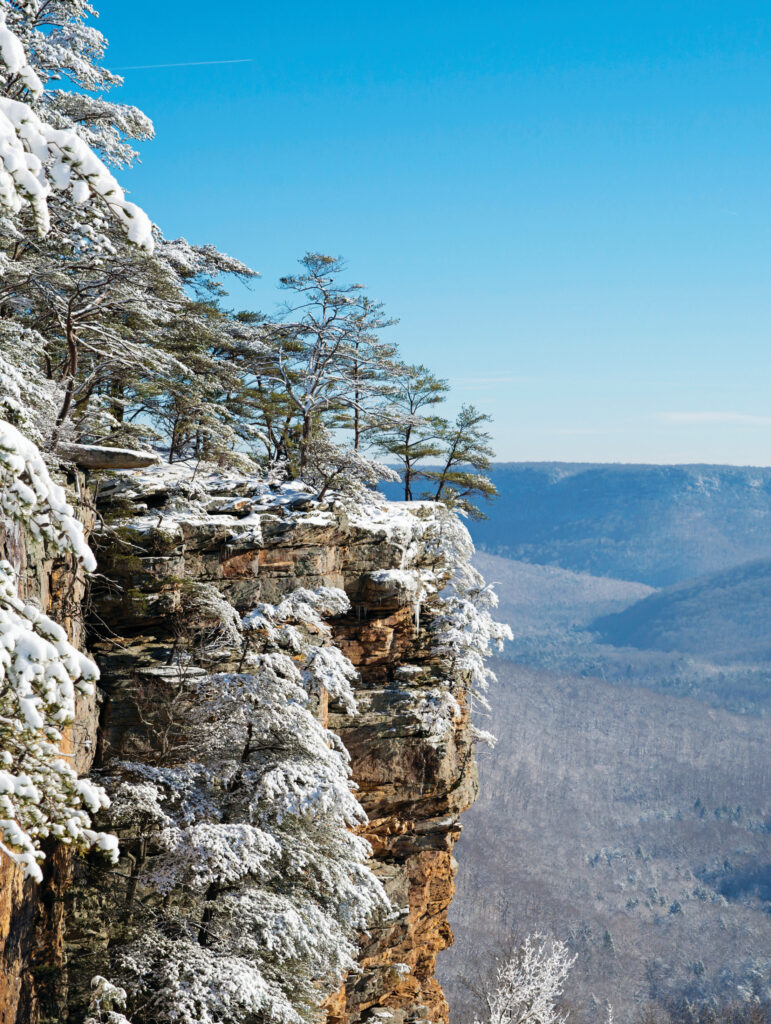Sometimes Mother Nature just takes your breath away. That is definitely the case when you stand atop the Great Stone Door, a cliff line that overlooks the beautiful Savage Gulf. A gorge branching off from the headwaters of the Collins River near Beersheba Springs, the gulf is filled with countless trees — a sea of hickories, oaks, maples, hemlocks, yellow poplars, pines, shrubs, ferns and more that goes on for miles.
“It’s one of the most beautiful overlooks in the entire state,” says Park Manager Aaron Reid, a native of Sequatchie County who grew up hiking in this area. “It’s untouched wilderness, and there are not many of those anymore.”
An abundance of trees is far from all that Tennessee’s newest state park offers, however. There are also impressive waterfalls, cascades, wildflowers, historic sites and about 60 miles of hiking trails.
The Savage Gulf area has been familiar to hikers and nature lovers for years as Savage Gulf State Natural Area, which remains within the confines of the state park. But as of September 2022, the natural area was joined with some former parts of South Cumberland State Park — land that will be developed with visitor facilities — to become the 57th state park in Tennessee.

South Cumberland had become too large to effectively manage as a single park, and the characteristics of the land that was transferred made it fit nicely with the natural area to become a new state park.
“It’s one of the most spectacular sites in our state, and the new park will serve Tennesseans for many years to come,” said Gov. Bill Lee at the announcement of the park’s creation. “Tennessee State Parks are recognized as one of the best state parks systems in the country, and this park adds to that special standing.”
Hiking
With so many trails available, it’s no surprise that one of the most popular activities at Savage Gulf is hiking. While there are a few trails rated as easy, the hiking experience at Savage Gulf can be a more rigorous one than at many state parks across Tennessee. Many of the Savage Gulf trails are rated at least moderate or intermediate, but about 20 miles of trails are instead marked difficult or strenuous. Visitors should be honest about their hiking abilities before setting off on any trail, especially those that are longer and more difficult. Reid says it’s also important to dress appropriately and bring enough water to stay hydrated, an amount that can vary based on the length of the trail and the weather conditions.
Fortunately, one of the must-see trails is on the easy end of the scale. The Stone Door Trail is an in-and-out hike of 0.9 mile one way, but it takes you past the Laurel Gulf Overlook to the Great Stone Door at the edge of the plateau. The trail begins at the appropriately named Stone Door Ranger Station.

For the more adventurous, the Collins Rim Trail is 6.1 miles long and follows the edge of the plateau along the Collins River Gulf. It is rated difficult because of steep climbs and having to maneuver a suspension bridge and the fording of a stream.
If your goal is to see waterfalls, some of the park’s shorter trails are where you’ll want to go. The Greeter Falls Loop is 0.8 mile long and the Laurel Falls Trail is only 0.3 mile. Both are rated in the middle of the scale of difficulty.
The longest trail, the 7.1-mile North Plateau Trail, is actually rated easy to moderate.
Many of the park’s 17 trails also provide looks into the region’s past. One of the best is the Stage Coach Road Historic Trail, which is 1.6 miles long but rated difficult. For those who are able to manage this trail, however, you’ll get to see a section of a toll road from the 1840s that connected McMinnville to Chattanooga. This section of that old road is on the National Register of Historic Places.

Reid says that something visitors should know is that not all the trails have trailheads with parking. They’re connected like a web, with some only accessible by taking another trail first. Something else that can confuse those trying to navigate the park is that sometimes you have to leave its boundaries to get to another part because no roads can be built through the 19,000-acre natural area, which makes up the majority of the park.
Waterfalls
Within the park are seven waterfalls that measure 25 feet or taller. Greeter Falls is one of two that measure 50 feet. It first drops over a 15-foot upper ledge, then a 50-foot lower ledge and into a plunge pool. Greeter Falls and Savage Falls are the only two in the park that have plunge pools deep enough for swimming or wading under normal conditions. In dry conditions, this will not be the case.
It’s imperative to remember safety in these areas. There is absolutely no diving off waterfalls because this can prove dangerous or even fatal. Also, do not bring any glass into these areas. No one wants to go wading only to cut their bare feet on glass or other sharp manmade objects.
Rock climbing
For the really adventurous, limited, permitted top-rope rock climbing and rappelling are available in designated sections of the Stone Door area only. You can register for your climb on the park’s website.
Picnicking
If long hikes or climbing rock faces aren’t for you and you simply want a beautiful place to have a picnic, the Savage Gulf is also perfect for those outdoor meals with a view. There are tables scattered throughout the park. For modest-sized gatherings, you can rent the Stone Door Pavilion at the north entrance to the park in Beersheba Springs. It has five picnic tables and a charcoal grill. It’s also located next to the easy Stone Door Trail.

Camping
Like a lot of things at Savage Gulf, the camping is more rugged and primitive. Numerous backcountry campsites are available to reserve as is one backcountry cabin, Hobbs Cabin. Water must be either carried in or filtered from natural sources.
Special events
A state park staple is ranger-led programming for visitors, and Savage Gulf is no different. Because of the nature of the park, these programs typically come in the form of hikes such as full-moon hikes or the Earth Day hike to Three Forks on April 23. Also of interest are special annual events.
This year the park and the community of Beersheba Springs will host the 20th Anniversary Trails and Trilliums Naturalist Rally April 19–21 — planned and managed by Friends of South Cumberland, which now promotes both South Cumberland and Savage Gulf state parks. The event includes an array of workshops, hikes, a star party, native plant sale, cookouts and more. One of the new offerings this year is a nature photography program with Robin Conover, photographer and former editor of The Tennessee Magazine. Registration for Trails and Trilliums opens in mid-February. Visit trailsandtrilliums.org for the full lineup and further information.

The Savage Gulf Marathon is one of the most challenging marathons runners can undertake. It’s so tough, in fact, that one of the requirements for participation is having completed a marathon or longer race. The average finish times for the Savage Gulf Marathon are higher than normal — anywhere between 4.5 and 8 hours — because of the rugged terrain and steep climbs. The date of this year’s race is March 30. See ultrasignup.com/register.aspx?did=108177 for more information if you are interested in participating.
Plans for the future
Park staff is currently in the first phase of planning the development of parts of the park that lie outside the natural area. First up are a new entrance road to a planned visitor center and RV campground. The estimated completion date is the spring or summer of 2026 but is subject to change. Later on, further development plans include more picnic areas, car/tent camping areas and a trail around a 65-acre lake as well as a boat dock and boat rental.
For now, however, you can make a visit to the ranger station and gift shop at the north end of the park.






